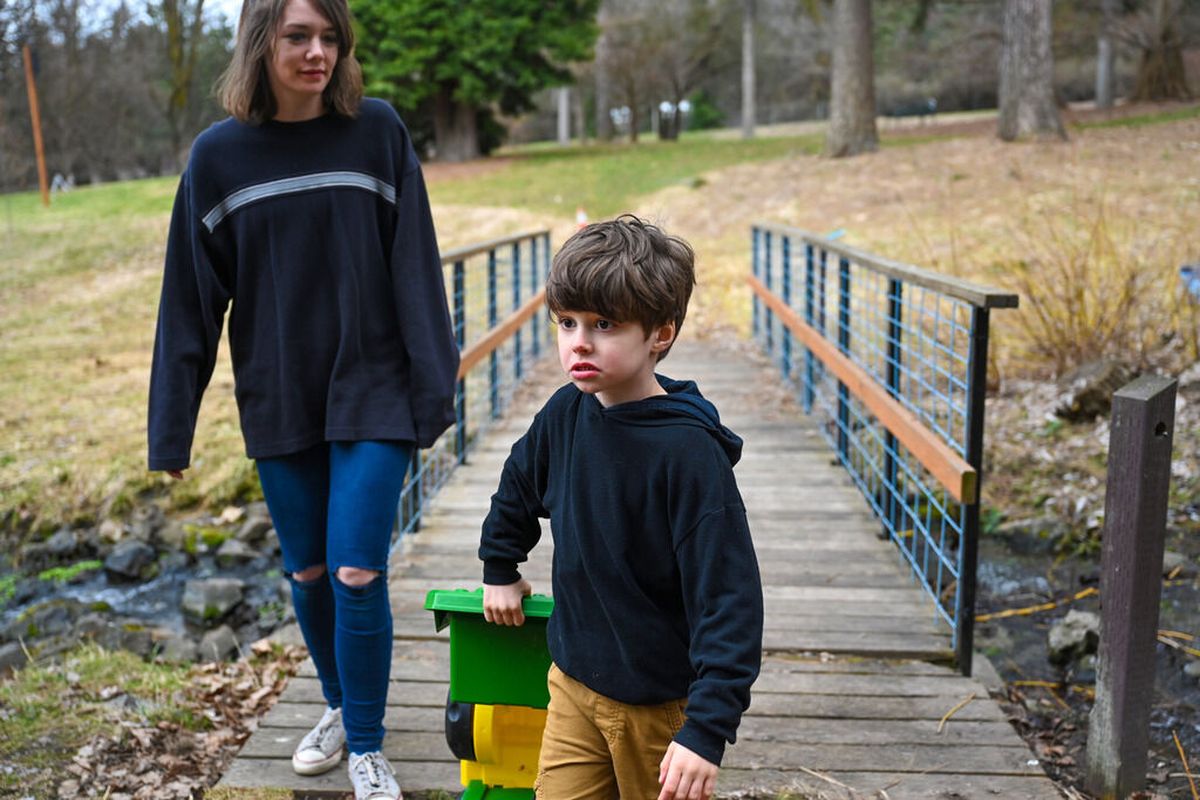WSU partners to open Spokane autism clinic aimed at earlier diagnosis, reduced wait time

When Jaxson was a year old, his parents suspected autism. His dad, Jeric Hirschi, who died in 2020, first noticed Jaxson avoided eye contact, was silent and craved strict routines.
But the wait was long to see a specialist, partly pandemic-related, said Jaxson’s mom, Dory Liddicoat. Jaxson, now 5, wasn’t diagnosed until age 3. Getting therapies also was challenging, she said, though he had early Joya Child & Family Development support.
Liddicoat has heard of wait times of a year to 18 months to get initial evaluations.
“A way earlier diagnosis is so important because the longer a person with autism waits, the less access to therapy, specialized IP in school and other support,” said Liddicoat, who launched an Autism in Spokane Facebook group. “Early diagnosis is giving them the tools to navigate life more successfully and nurture self-compassion.”
On April 25, a new Spokane autism clinic is set to open with multidisciplinary specialists collaborating to help close those gaps. A group ranging from a pediatrics expert to a psychologist will evaluate patients for autism spectrum disorder, starting at 18 months.
The providers hope to cut down the average wait times for initial diagnosis, including for rural residents.
Called the Autism and Neurodevelopmental Clinic, it’s through a partnership between Range Community Clinic and Washington State University’s Elson S. Floyd College of Medicine. Patients will be seen in clinic spaces at the WSU Spokane Health Sciences Building on Riverpoint Boulevard.
Autism is a developmental disability caused by differences in the brain that affects about 1 in 36 children, says the Centers for Disease Control and Prevention. Although there are differences on a spectrum, autism often causes problems with social communication and interaction, and restricted or repetitive behaviors or interests.
For patients up to age 18, the new clinic’s providers will walk a family through initial evaluation and do comprehensive treatment planning, then collaboratively work with the child’s primary providers, said Georgina Lynch, a clinic co-director and WSU assistant professor.
Lynch said the average age of an autism diagnosis is 4, which misses key developmental milestones.
“We’ll be operating as a multidisciplinary team to include pediatrics, speech pathology, dietitian, behavioral analyst, physician assistant and psychologist,” Lynch said. “That group will continue to grow. They’ll use this space for debriefing with families after the full evaluation. We also have Zoom capability for teleconferencing across the state.”
Students across WSU’s health sciences programs will participate, observe and learn in the clinic, she said.
Families otherwise have to go to an autism clinic at Seattle Children’s to get such a multidisciplinary assessment, and it’s long overdue in Spokane, said Dawn Sidell, Northwest Autism Center executive director. The Spokane center will offer services such as therapies, day clinic early-intervention, consulting and resources for families.
“This new autism and neurodevelopmental center has so, so long been needed in Spokane,” Sidell said. “Families are frequently forced to wait, if they’re even able to get into Seattle Children’s, to receive a multidisciplinary team diagnosis.”
She talked Wednesday to a Spokane provider at an agency now receiving up to 50 referrals a week of children needing an autism diagnostic workup, “so it’s obvious that there is a critical need here.”
“The positive impact goes far beyond just meeting the needs of families, which is phenomenal in itself. It helps bring a more uniformed approach to our region,” Sidell said.
“We have had a fragmented approach to diagnosis, assessment and the treatment of autism for a long time, and it compromises our ability to serve families in a comprehensive and thoughtful manner that will help provide the best outcomes for both the child and family.”
Sidell said she thinks the clinic will have ripple effects because the multidisciplinary approach can look at co-occurring health issues sometimes overlooked, from feeding issues because of picky eating patterns to sleep disorders. Training and research involving health sciences students will bring awareness to future providers.
Among the clinic’s specialists is Dr. Nalini Gupta, a pediatrician trained in evaluation and management of autism and related disorders. Overall, pediatric patients will receive a one-hour medical and developmental exam, then work with a speech pathologist or the clinical psychologist for a behavioral testing portion, along with other evaluations.
A test is provided to rule out whether hearing loss is impairing development. Children who don’t talk also will receive an alternative communication assessment that helps them tell others what they need and want.
Another room with toys offers space for an Autism Diagnostic Observation Schedule or ADOS, a widely-used assessment of communication, social interaction and play or imaginative use of materials. It has an observational window, but the child can’t see through to observers.
The clinic also has a room with sensory-friendly toys and a rocking chair. That space is designed for the children to get breaks or stay with supervised care so families can meet with specialists. It will take about three to four hours for pediatric patients to go through an evaluation, Lynch said.
Other neurodevelopmental disorders can be evaluated, as well, such as learning disabilities.
A primary care provider needs to refer pediatric patients to the clinic, Lynch said, and it accepts both Medicaid and private insurance.
“We know initially our clinic will run two weeks out of the month, then by fall, we will run four weeks out of the month, and the reason is to build capacity with the team,” Lynch said.
“Our job is to integrate the academic research-based component to this while also building along evidence-based practices with the team for the clinical service model.
“Our goal is by the end of year one, to see 50 patients per month, and we have a goal three to five years out, it will be 100 patients a month.”